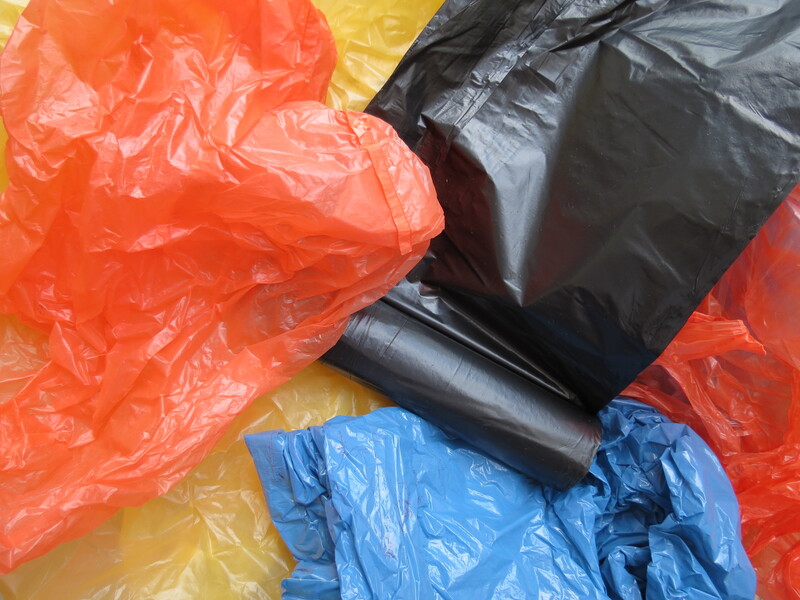Professional Insights: Storing Your Sofa for the Long Term
Are you wondering how to keep your beloved sofa in pristine condition during an extended period of non-use? Whether you're moving, remodeling, or simply need extra space, understanding how to store your sofa for the long term is crucial. In this comprehensive article, we'll explore expert tips and proven strategies for storing couches and sofas long-term, ensuring they emerge from storage looking as good as the day you left them.
Why Proper Sofas Storage Matters
When it comes to furniture, sofas are often the centerpiece of any living space. Beyond their aesthetic and functional value, sofas can also represent a significant investment. Failure to store sofas properly long-term can result in irreversible damage, such as mold, odors, warping, or fabric deterioration. In this article, we'll present professional insights that will help you safeguard your sofa for the long haul.

Preparing Your Sofa for Storage
Before you tuck your sofa away, it's essential to prepare it thoroughly to prevent damage over time. Here's how to get started:
1. Clean the Sofa Thoroughly
- Vacuum every inch, including crevices and under cushions, to remove dust, dirt, crumbs, or pet hair.
- For fabric sofas, use an upholstery cleaner or a mixture of mild detergent and water.
- For leather or faux leather, wipe surfaces with a leather cleaner and waterproof conditioner to maintain softness during storage.
- Allow your sofa ample drying time to ensure zero moisture remains, which can promote mold and mildew growth.
2. Disassemble When Possible
- Remove legs, cushions, and detachable parts to make transportation and storage easier.
- Wrap and store each component separately for added safety and to minimize wear and tear.
- Keep all hardware (screws, bolts, etc.) in a clearly labeled bag attached to the main frame.
Packing Your Sofa for Long-Term Storage
Proper packing materials and methods are critical for long-term sofa storage.
1. Select a Suitable Covering
- Opt for breathable furniture covers or moving blankets. These prevent dust without locking in moisture.
- Avoid plastic covers if possible, as they can trap condensation, encouraging mold.
2. Protect High-Wear Areas
- Wrap delicate arms and corners with extra padding to prevent scuffs and snags during the move and while in storage.
- Use bubble wrap or foam for wooden or metal accents to avoid scratches and prevent rust.
3. Avoid Compression
- Don't stack heavy boxes or items on your sofa, as this will flatten the cushions and warp the frame over time.
- Store cushions vertically in separate breathable bags to retain their shape.
Choosing the Right Storage Environment
Not all storage spaces are equal, and the right choice can make a huge difference for long-term furniture preservation.
1. Climate-Controlled Storage Units
- Avoid extreme temperatures and moisture by opting for a climate-controlled storage unit.
- Stable humidity prevents moisture buildup, while moderated temperatures protect fabrics, leather, and wooden frames.
- While more expensive, this is the gold standard for safe sofa storage, especially for high-value or antique sofas.
2. Elevate Your Sofa
- Never place your sofa directly on concrete floors. Use wood pallets or blocks to keep the furniture raised.
- This protects against accidental water spills, condensation, or pest infestations that may enter the storage unit at ground level.
3. Air Circulation
- Leave space between your sofa and the walls of the storage unit.
- Proper airflow reduces the risk of mold and mildew by permitting trapped moisture to evaporate.
Preventative Measures While Your Sofa is in Storage
To make sure your sofa is in top condition upon retrieval, consider these on-going protective strategies:
1. Regularly Inspect Your Storage Unit
- If possible, check on your stored sofa every few months.
- Look for signs of dust buildup, pests, or moisture intrusion.
- Address problems immediately to prevent long-lasting damage.
2. Use Desiccants and Pest Deterrents
- Place silica gel packs or moisture absorbers inside the storage unit or under sofa cushions.
- Consider adding natural pest deterrents (like cedar blocks or lavender sachets) to keep insects away without risking stains or odors.
Long-Term Storage Recommendations for Special Sofa Types
Different sofas require tailored care. Here's how to approach each material for professional sofa storage:
1. Leather Sofas
- Condition leather surfaces thoroughly before storage to prevent cracking.
- Wrap in breathable materials--never plastic--to allow natural oil exchange and humidity balance.
- Avoid direct sunlight in the storage area, as this can fade and damage leather over time.
2. Fabric Sofas
- Clean and dry completely before storage to avoid mold.
- Consider using fabric protectant sprays for an extra layer of defense.
- If your region is humid, increase the number of moisture absorbers inside your storage unit.
3. Wooden or Antique Sofas
- Polish wooden surfaces to keep them nourished.
- Wrap exposed wood with soft padding to prevent scratches.
- Keep off concrete and ensure steady air circulation to minimize warping or pest damage.
Safe Transportation Tips for Storing Your Sofa
Damage can occur during the movement and loading process, so make sure to:
- Use straps to secure the sofa during transit.
- Disassemble where possible to ease handling and reduce the risk of bumping into walls or door frames.
- Carry upright when possible, particularly for long staircases or narrow passages.
- Always have at least two people to move a large sofa safely.
What to Avoid When Storing Your Sofa Long-Term
Even with careful planning, common missteps can derail your efforts. Key mistakes include:
- Storing the sofa dirty, inviting pests, odors, or stains.
- Using tight plastic wraps, which trap moisture and promote mold growth.
- Ignoring storage unit conditions, such as unchecked humidity or poor ventilation.
- Stacking heavy objects on top, leading to cushion and frame deformation.
- Storing in low-cost, non-climate-controlled spaces for delicate or valuable sofas.
Retrieving Your Sofa After Long-Term Storage
When it's time to reclaim your sofa from storage, follow these steps to ease the transition back into your home:
- Air it out: Remove all coverings and let your sofa breathe in a dry, well-ventilated area for several hours.
- Clean surfaces: Dust off and wipe down all parts. For fabric, vacuum thoroughly; for leather or wood, use respective cleaners and conditioners.
- Check for pests or mildew: Inspect all areas, especially hidden crevices. Address any problems before bringing the sofa indoors.
- Reassemble carefully: Use labeled hardware to reconstruct disassembled parts; avoid forcing components together.
Frequently Asked Questions
How long can a sofa be safely stored?
With proper preparation and optimal storage conditions, a sofa can be stored for several years without major damage. Key factors include controlling humidity, ensuring adequate airflow, and using the right covers and packing techniques.
Is climate-control necessary for all sofas?
For high-value, antique, or leather sofas, climate-control is strongly recommended. More robust, modern fabric sofas may fare well in clean, dry, and indoor environments, but risks of mold or mildew are always present when temperature or humidity fluctuates.
Can I use vacuum-sealed bags for cushions or pillows?
It's not advisable to vacuum-seal foam cushions for long-term storage, as this can permanently deform the foam. Instead, use breathable storage bags or wrap cushions in cotton sheets to protect from dust and pests.

Professional Furniture Storage Services: Are They Worth It?
If you're not confident in handling the logistics yourself or are storing multiple high-end pieces, many storage companies offer professional packing and storage services. These experts understand the nuances of long-term sofa storage and typically:
- Provide climate-controlled facilities with advanced security and pest control.
- Offer delivery and pickup, reducing risk during transport.
- Utilize industry-grade packing materials and techniques.
- Insure items against damage or theft for peace of mind.
While the cost is higher than DIY storage, entrusting your sofa to professionals can be a wise investment--especially for antique, luxury, or sentimental pieces.
Final Thoughts: Long-Term Success in Sofa Storage
To store your sofa for the long term without worry, advance planning and the right materials are key. Clean and prep your sofa, select an appropriate, climate-stable storage space, guard against moisture and pests, and commit to regular inspections. By applying these professional insights on sofa storage, your favorite furniture will be ready to reclaim its spot in your home whenever you need it--looking fresh, clean, and inviting as ever.
For more expert guidance on furniture care and related topics, explore our featured articles and discover how to keep every piece in your home at its best--even in storage!



